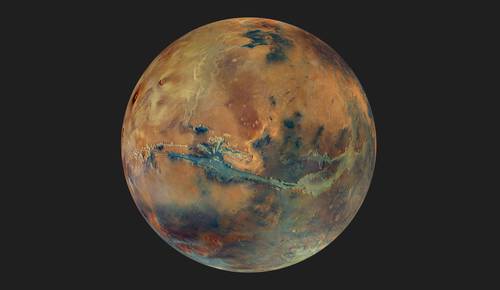Madrid. Yesterday began a new year on Mars. At exactly 09:32 on Earth, the Red Planet began a new orbit around the Sun.
This is the 38th year on Mars. The convention for counting years in the Martian calendar began in 1955, and the first one coincided with a great storm called the great dust storm of 1956
. According to a convention set in 2000 by a team of scientists led by the United States Space Science Institute, the first Martian year coincided with that of the first storm to be widely studied with telescopes.
According to ESA, there are some significant differences between the years on the two planets: a Martian day lasts 24 hours and 39 minutes, slightly longer than an Earth day.
A year on Mars is equivalent to 687 Earth days, or 668 suns. To find our Martian age, we must divide the age by 1.88.
The Martian New Year begins on the northern equinox (spring in the north and autumn in the south on Mars).
Seasons: Like Earth, Mars has four seasons: winter, spring, summer, and fall. Unlike terrestrial ones, they do not have the same duration due to the more elliptical orbit of Mars. The planet’s axial tilt causes the northern hemisphere to receive more sunlight during the northern summer and the southern hemisphere to receive more sunlight in the northern winter. Winter and summer come when the northern and southern hemispheres move away from the Sun in turn.
Dust seasons: The second half of the Martian year is usually marked by ferocious dust storms that can sometimes affect the entire planet. As Mars approaches the Sun, the atmosphere warms, causing winds to lift very fine brown particles from the soil. Once in the air, they heat up and redistribute some of that heat to the surrounding atmosphere. This process can quickly pump out a large amount of powder.
Climate: Temperature fluctuations between day and night are extreme on Mars. At noon on a summer day, the air temperature can reach zero degrees Celsius, but at night it drops to -60. In winter, night temperatures are even colder, reaching -110 degrees. A recurring meteorological phenomenon is the Elongated Cloud of Mons Arsia, made of ice crystals that can reach up to 1,800 kilometers in length.
